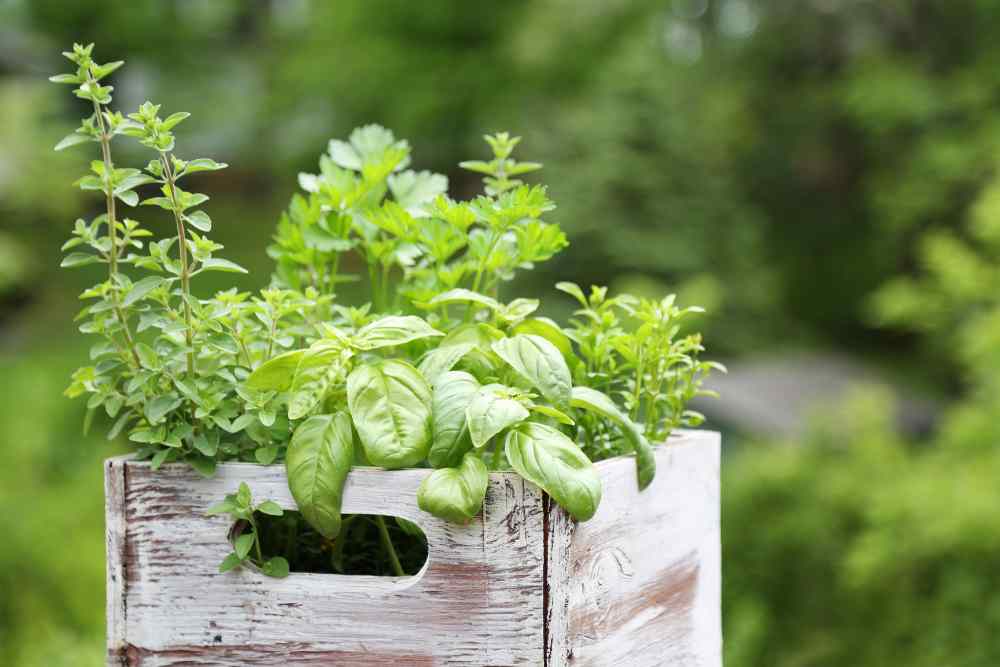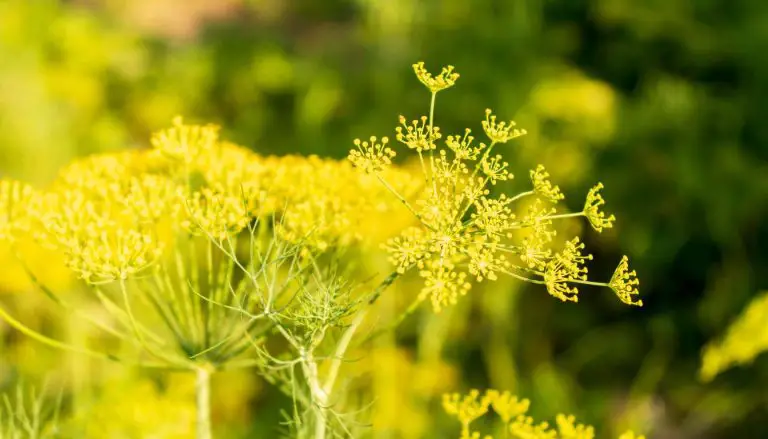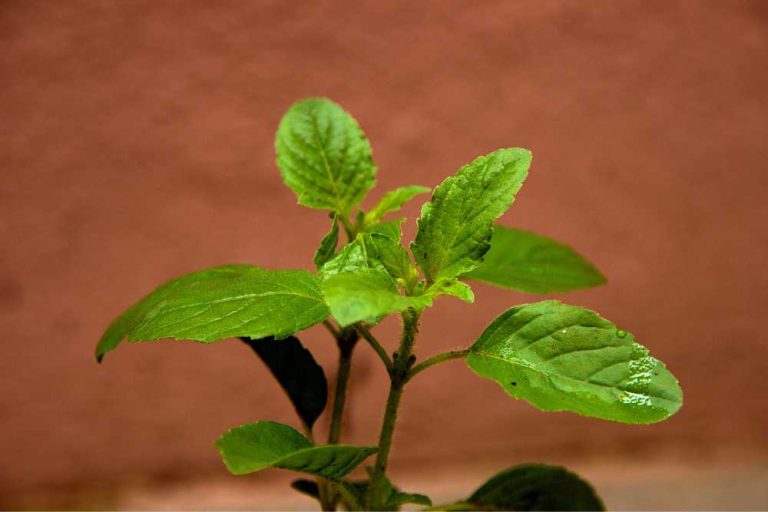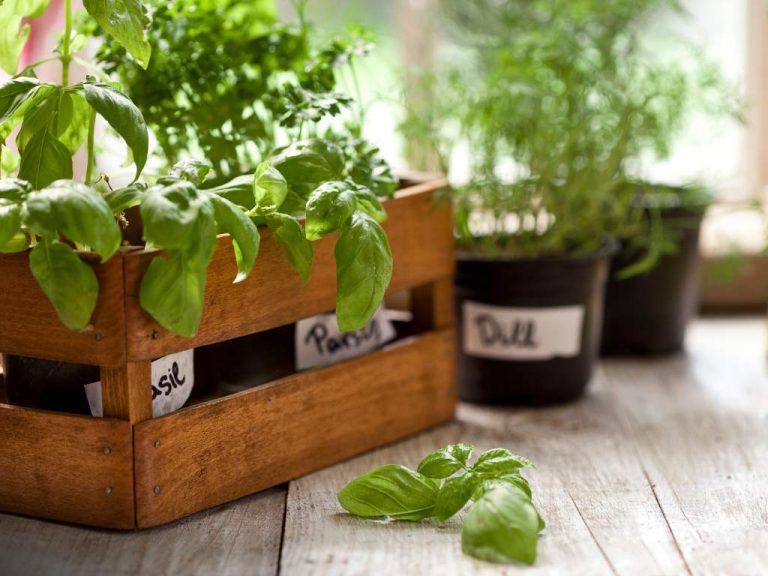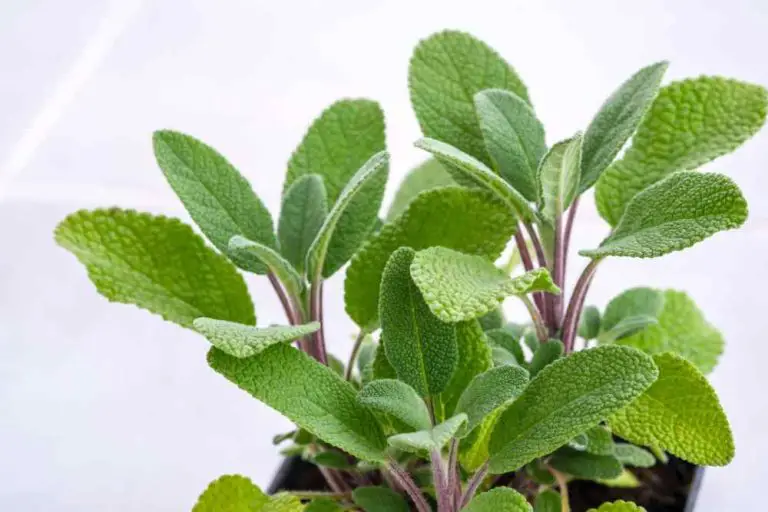Herb Gardening for Beginners: A Step-by-Step Guide to Growing Your Own Herbal Oasis
Do you want to start a herb garden but aren’t sure if you’ll be successful? Do not be worried! One of the simplest things you can do is to start a herb garden. Herb gardening is a simple and delicious way to get started with gardening.
What Are Herbs?
Herb is any plant with leaves, seeds, or flowers that is used for flavoring, medicine, food, or perfume. The term herb is, for the most part, ambiguous. Some sources classify them as plants with no woody stems. Others consider a herb to be any plant that is used for medicinal, culinary, or aromatic purposes.
That’s a fairly expansive definition. Herbs are plants that are used for their roots, leaves, green stems, and flowers, according to common perception. Traditional herb or vegetable gardens raised beds, containers, or the mixed border, are all the ways to grow commonly used culinary herbs. Basil, coriander, and dill are popular annuals; caraway, chervil, and parsley are biennials; and borage, chives, fennel, marjoram, mint, sage, tarragon, and thyme are perennials.
Herb Gardening For Beginners
Selecting a Location for Starting an Herb Garden
The majority of homegrown herbs require two things: sunlight and well-drained soil. This means that you should look for a location in your yard where you can plant a herb garden that gets six or more hours of sunlight per day and is well-drained.
During the scorching summer months, some herbs, such as basil, and parsley, may benefit from partial shade from the hottest midday sun. When growing herbs indoors, the best location is near a sunny window. Consider purchasing a grow light if your home does not receive enough natural light.
These useful additions not only provide your plant with the needed amount of light but also encourage it to grow fuller. When deciding where to start growing a herb garden, many people think about convenience. It will be easier to harvest herbs from the herb garden if you plant them near the kitchen or the house.
Preparing The Soil Before Plant An Herb Garden
After you’ve decided on a location for your herb garden, you’ll need to prepare the soil. If the soil is sandy or clay-heavy, it’s better to add a lot of compost. Even if your soil is in good condition, mixing in some compost will help the herbs grow by providing nutrients. Make sure not to use composted manures in the herb garden when growing herbs. These are typically high in nitrogen, which speeds up the growth of the herbs but reduces their flavor.
Any time you’re growing herbs, you should test the pH levels, and most of them require a pH of between 6 and 7. After deciding on a location, cultivate the soil to a depth of 12 to 18 ” before leveling it.
Remove the topsoil temporarily if there is only a thin layer of topsoil above the hard subsoil. Add organic matter to the subsoil to break it up. Replace the subsoil after it has been improved. Even if the topsoil is superior to the subsoil, it may still require additional organic matter.
Harvesting
Harvesting may include one or more plant parts, depending on the herb. You usually harvest the leaves, but you can also pick flowers, seeds, or roots in some cases.
Leaves
When the leaves have the highest concentration of essential oils, harvest them. Herbs get their distinct flavor or scent from these oils. Cut herbs as soon as the dew has evaporated from the leaves in the morning as possible. Harvest on a dry day with at least two sunny days preceding it.
Roots
Herbs like Angelica and Lovage produce usable roots. Late fall or early spring is the best time to dig these roots. After digging, thoroughly clean them. The large roots should then be sliced or split. Place the pieces on screens in thin layers and turn them several times a week. After they’ve dried partially, finish them in a low-heat oven before storing them in an airtight container. It may take six to eight weeks for the roots to completely dry. When the root piece is dry, it should snap when bent.
Seeds
Dill, fennel, and anise seeds can be grown and processed at home. Cut the heads of the plants containing the seeds when they begin to mature and yellow, leaving a short stem. Dry them for five or six days on a drying tray. The seeds should then fall from the heads fairly easily. Remove the chaff and continue to dry the seeds for another week. They should be stirred frequently. After the seeds have dried completely, store them in airtight jars.
Growing Herbs In Pots
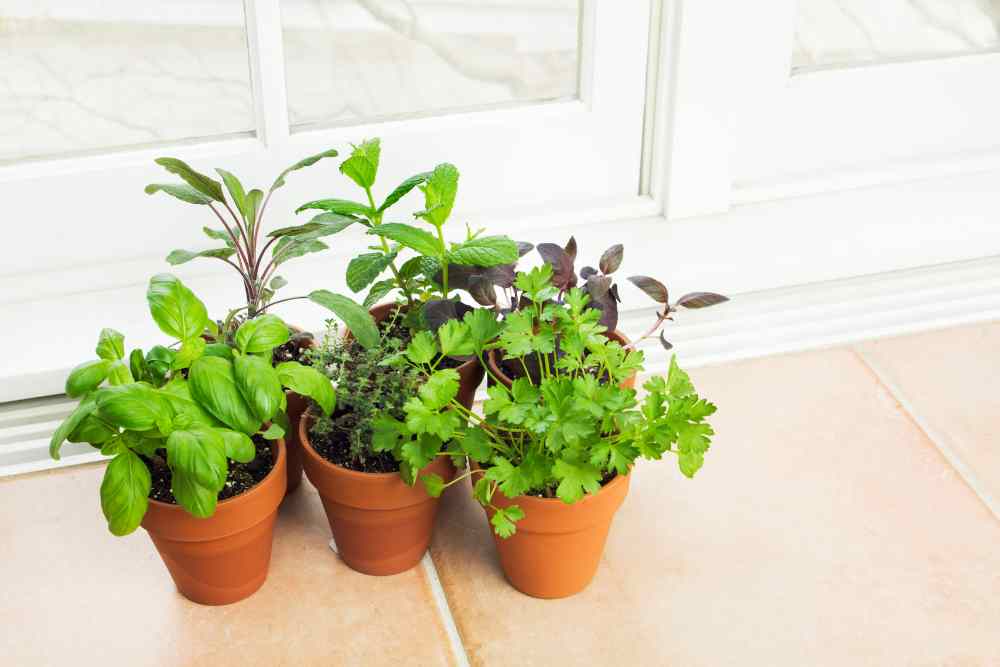
You can grow tender perennials like rosemary and flowering sages all year long by growing herbs in pots and planters. In the fall, simply bring them inside. Furthermore, container gardening is an excellent choice for gardeners with limited space or soil that does not drain well. Choose a window facing south or west. They require as much light as you can provide during the winter.
If a bright location isn’t available, use “grow lamps” or fluorescent lights to supplement existing light. Begin with good-quality potting soil that drains well. Ordinary garden soil, which does not drain well when used in a container, should not be used.
Many plastic window boxes have a drainage reservoir at the bottom. Grow bags are also useful, although less attractive. Pots also have the advantage of being portable, allowing them to be moved around the house as the seasons change.
Woodier herbs can be left outside during the winter, but they should be protected from frost with garden fleece. Terracotta pots are great because they’re heavy and porous, so they’ll stay put and won’t suffocate the soil. They also look great. They do conduct heat and thus dry out quickly, so keep an eye on them at all times.
Like other container plants, herbs also need to be watered and fertilized on a regular basis throughout the growing season. Use liquid fertilizer at the recommended rate during the outdoor growing season. If you bring your plants inside for the winter, you only need to fertilize them once or twice a month.
When it comes to storing your herbs, you have a few options: pots, window boxes, and grow bags. Whatever you choose, drainage is critical: if your herbs cannot drain properly, they will drown.
The 10 Best Herbs For Beginners
1. Parsley
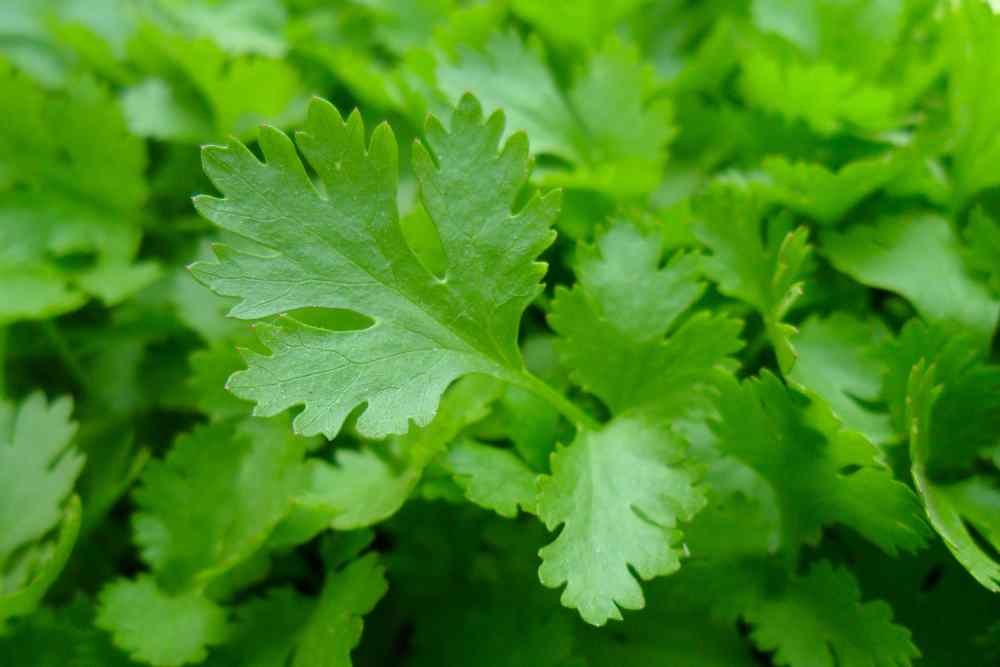
This biennial herb has a variety of culinary applications! The acidity of this leafy herb is similar to that of lemons. To get a taste of the tanginess, chop some fresh parsley and add it to a salad. Never cook it because it will lose all of its flavor and crunchy texture.
Sow seeds inside on a sunny windowsill to give them a head start. Alternatively, as the soil warms up, sow directly in the ground. Because parsley seeds might take a long time to germinate, soak them in water overnight before planting.
Because the seeds secrete a growth inhibitor, make sure to replace the water every 2 hours. Sow seeds in a seed starting medium and cover the seeds with 1/4″ of soil. Try to maintain a uniform moisture level in the soil. The ideal temperature for seeds is 70 degrees. Be patient! seed germination can take up to 14 days.
Transplant them when they reach 6” in height and after the last frost date. Select a spot with rich, slightly damp soil in partial shade or full sun. For healthy parsley, plants are sure to loosen soil deep into the ground.
General space plants are 6-8” apart but it may change depending on the variety. If you protect your parsley over the winter, it may reseed itself. To harvest, the single leaves or bunches low down on the stem can be cut and used fresh. It may also be harvested at any time and will simply grow back, giving you at least 12 months of fresh parsley.
Herbs have a similar acidity to that of lemons. Chop some fresh parsley and add it to a salad to immediately experience the tanginess. Never cook it as it will lose all its taste and crunchy texture.
2. Oregano
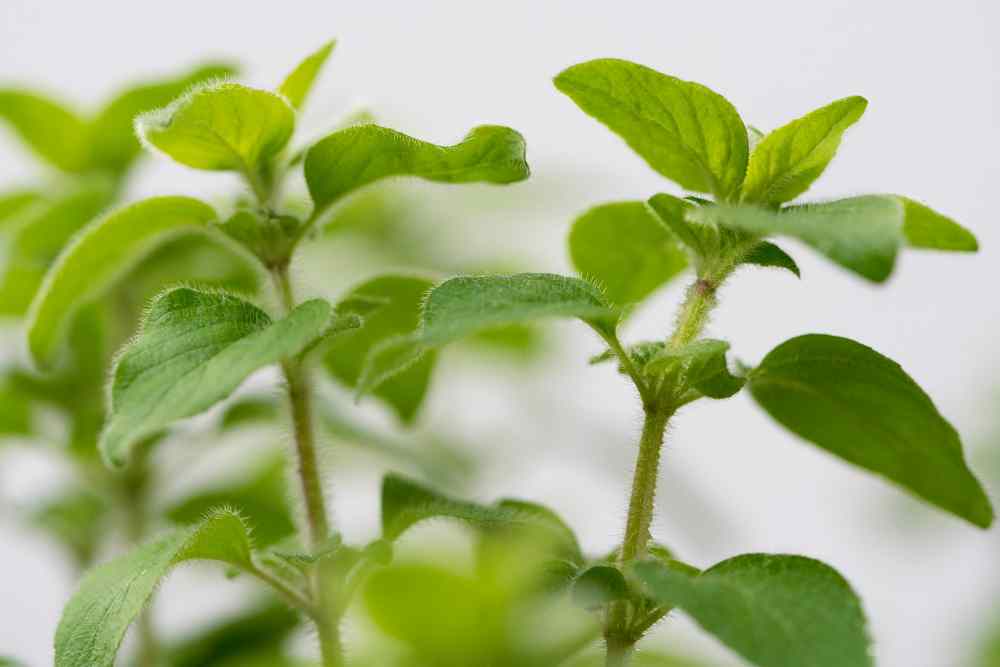
Oregano plants prefer light soils and thrive in warm, sunny locations. They have lovely pink flowers and are an excellent ground cover for the front of the border. Sow the seeds in the spring once the soil has warmed up, or start them indoors in pots. Pinch out the vertical growing tips when the plants reach 10cm in height to encourage more leafy side shoots.
This fragrant herb has been studied for its antifungal and antibacterial properties and its deliciousness. When you smell dried oregano, also known as “pizza herb,” it’s nearly impossible not to think of this favorite Italian dish. If oregano is too strong for you, try marjoram, which is a milder, less pungent, and sweeter-tasting variety of oregano.
3. Mint
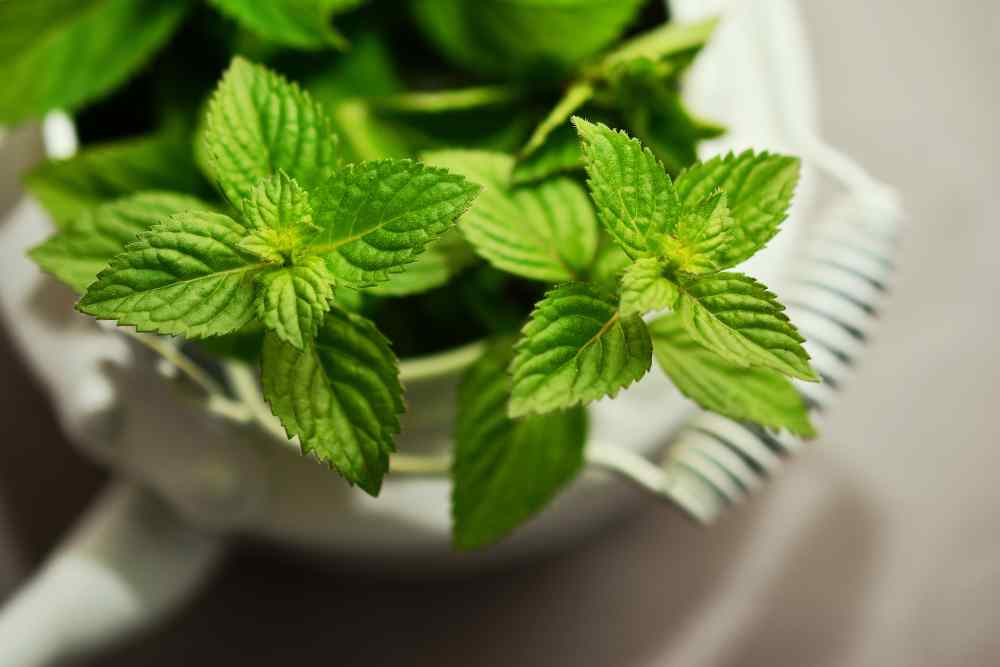
Mint is a simple herb to grow, but if you’re not careful, it will take over your garden. Mint is one of your must-have herbs. It requires only a little water and grows in both the sun and the shade. Mint can be grown from seed, but the results are often different from the parent plant. Mint grows best in a container.
Select a large pot to allow the mint to spread out if you want a lot of it. Small plastic pots should be avoided because they will quickly become root-bound. Mint seeds should be planted 1/8″ deep and covered with loose, moist soil. Keep the soil temperature above 70 degrees for the best germination results.
When the transplants have grown to a reasonable size and have been hardened o from the outside conditions bring them outside. Then plant them anywhere from 12-24” apart depending on the variety.
Mint will thrive in almost any soil condition, so choose a location that gets full to partial sun. Mint leaves can be harvested at any time after the plant has become established in your garden. Pick them early in the morning when the oils tend to be strongest. Dry the leaves in a cool, well-ventilated area. An upset stomach can be relieved by chewing a few mint leaves or steeping them in tea.
4. Basil
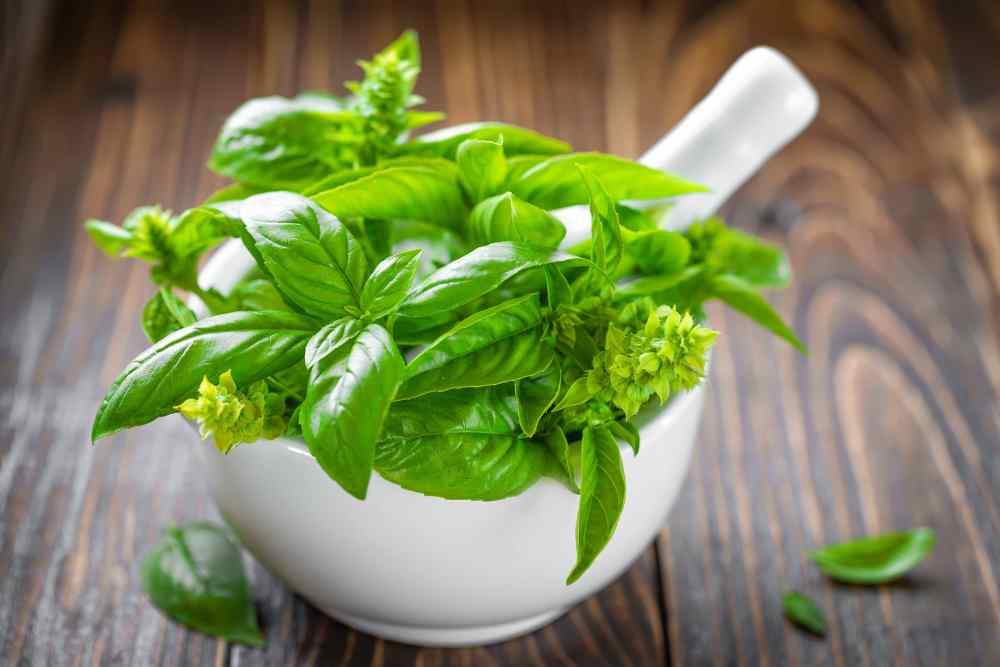
Basil is a must-have for anyone who enjoys pizza, pesto, and bruschettas. Basil is a popular herb because it tastes great and can be used in a variety of dishes and drinks. They include cinnamon, lemon, and purple basil, which are mostly used for decoration.
From March onwards, sow seeds in potting compost on a sunny windowsill. Basil prefers moist, well-drained soil. In order to promote new growth, they need to be pruned frequently. Start your basil seeds 6-8 weeks before the last frost date in your area. To ensure germination, place a few seeds in each cell. The plants will have plenty of space to grow if the seeds are planted 12-16” apart.
Cover the seeds with a thin layer of soil and lightly water the soil. Cover with a plastic top. Place the plant in a sunny location to speed up germination. When seedlings emerge, remove the plastic top and water it twice a day.
Basil can be transplanted into the garden once two sets of leaves have emerged. When the plants reach 15cm in height, remove the growing tip to encourage bushier growth. When the weather warms up, plant in the garden.
5. Rosemary
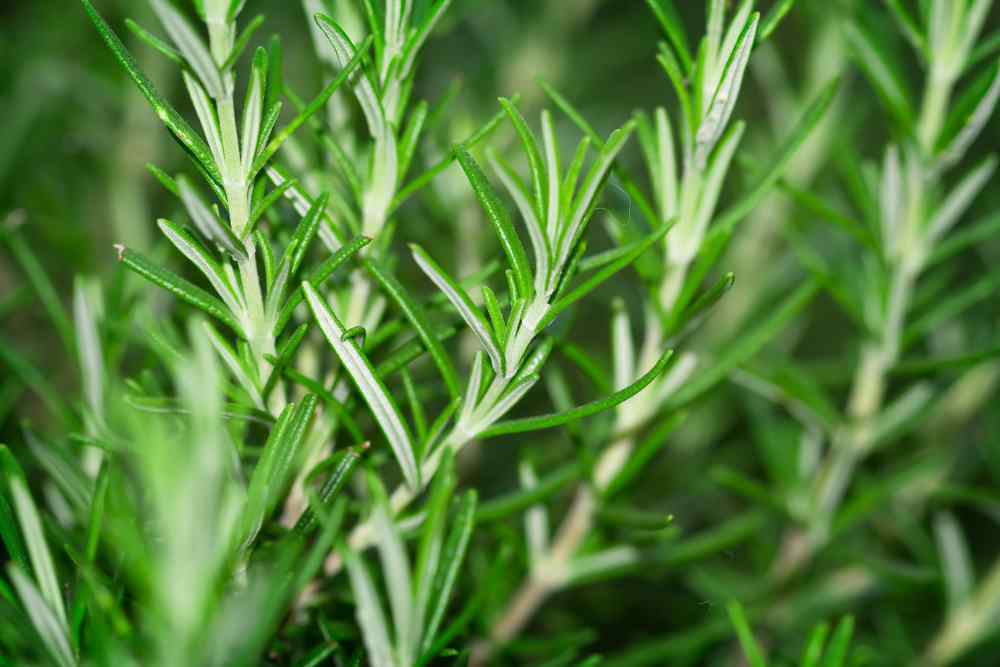
If you’re looking for a tough herb that doesn’t require much care, this is a perfect choice. It can last for several years surviving mostly on rainwater alone. It has needle-like leaves and pink, purple, white, or blue flowers with a strong fragrance.
Rosemary is commonly used in pasta, vegetables, and soups in Italian and Mediterranean cuisine. Plant in full sun in a container or large pot. When the flowers fade, cut back the stems to keep the plant looking full and compact. Otherwise, the plants will become leggy.
6. Chives
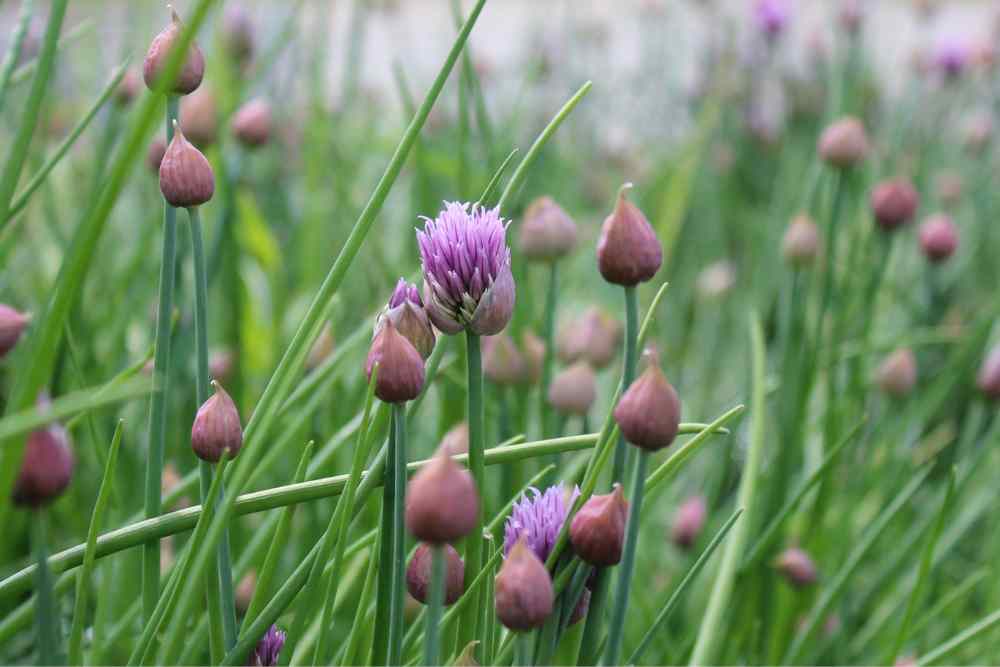
Chives are a close relative of onions, with slender, pointed leaves. It’s one of the simplest culinary herbs to grow and a great way to gain confidence as a new gardener. They also produce beautiful pink or purple fuzzy globe flowers.
They can be started from seed either indoors or outdoors. Chive seeds should be planted about 1/4″ deep in wet soil. Chive seeds germinate best when kept indoors in a dark place until they sprout. Then they should move to somewhere where they can get some sun. Chives thrive in soil temperatures of 60-70 degrees.
The chives are ready to be transplanted into the garden when they reach a height of 6 ”. Find a location with plenty of sunlight and rich soil, but it will thrive in almost any environment. If you decide to sow chive seeds directly into the garden, wait until after the last frost. The seeds may take a long time to germinate until the soil warms up. It’s just as simple to harvest chives as it is to grow them.
Every time, you harvest cut them two inches above the soil. Ensure that the plants are well-watered. Chives bloom in the summer with lovely pink flowers that make a lovely (and edible) addition to salads. On top of soups, roasted potatoes, avocado toast, smoked salmon, and cream cheese bagels, chopped chives are delicious.
7. Thyme
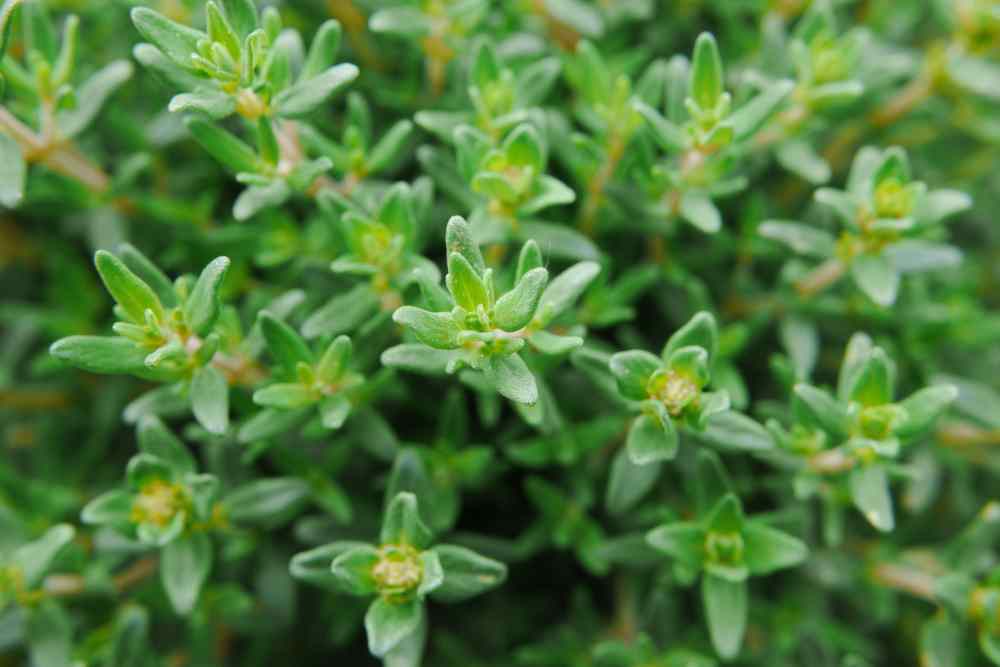
Thyme is another great edible plant for your garden. It looks great in a pot, but it also works well as a ground cover in the garden, forming large clumps that you can walk on. Thyme prefers to be planted in a shady spot in full sun and doesn’t require constant watering, making it ideal for any aspiring gardener in a hot climate.
It comes in several varieties, including wooly and lemon thyme, and can be harvested at any time of year. Thyme is a delicious chicken seasoning that also has antiseptic and antifungal properties, as well as the ability to slow down the aging process. Because thyme is a bushy plant, make sure to leave 6-8 inches between seeds when sowing them.
8. Dill

Dill is a tall, hardy herb that thrives as an annual in most climates. One of the most simple herbs to grow both indoors and outdoors. They can be grown in a container garden with ease. As they don’t like root disturbance, it’s best to sow them where they’ll stay.
When growing plants outside, there are two things to keep in mind. It grows tall, so make sure you plant it somewhere where it won’t block other plants from getting enough sun.
Also, because it grows tall, high winds can damage it, so try to find a location that blocks the wind. As it germinates quickly Plant dill directly where it will stay. Look for a location that gets a lot of sunlight. Cover the seed with 1/4″ of soil. generously water the soil.
In order for the dill roots to strengthen properly, the soil needs to be cultivated deep. Plant seeds in the spring after the last frost date. Plant herb seeds after the last frost date in the spring. Plant seeds every few weeks to ensure a long harvest.
The leaves can be cut off and used in dishes in the spring and summer. The seeds can be collected in paper bags and stored when they turn brown and ripen later in the summer; they can be used ground or whole, and are frequently used as an ingredient in curry powder.
9. Sage
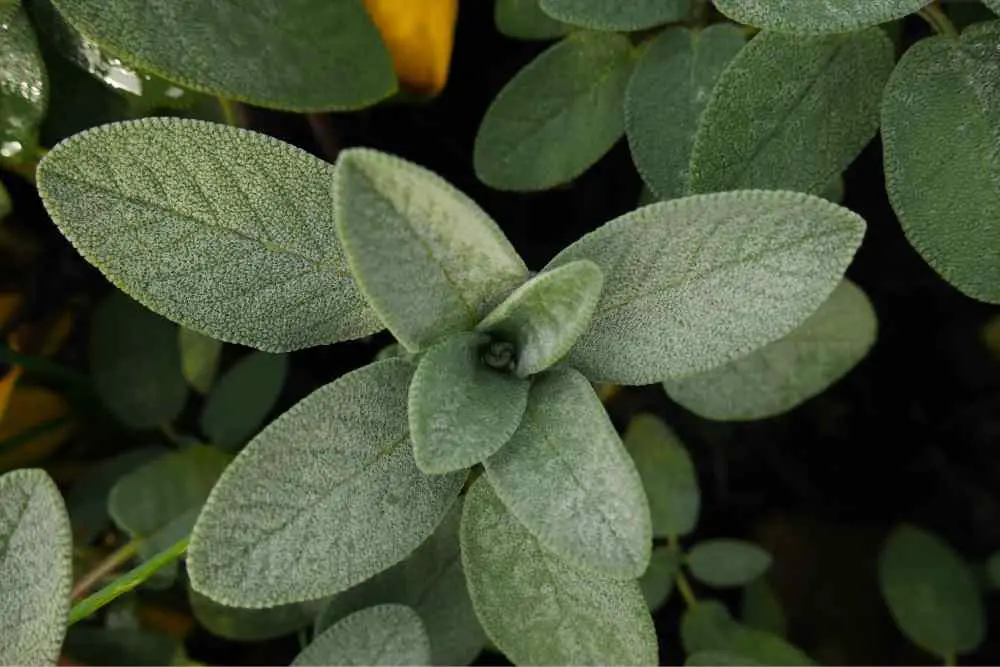
Sage has silvery, soft greyish-green leaves and blooms in the spring with delicate pink, purple, white, or blue flowers. While not all sage varieties are edible, the ones that are are commonly used to season meats and soups. Sage is a hardy plant that grows best in direct sunlight. For a unique touch in the garden, use sage as a perennial border.
Sage can be started indoors or outdoors, but for better germination rates, we recommend starting indoors. Spread the sage seeds evenly over the soil and cover them with 1/8″ of damp but not soaked soil. Not all seeds germinate, and those that do may take up to six weeks to germinate. Patience is essential!
When your Sage seeds have grown into seedlings and are ready to be transplanted into your home garden, make sure they are hardened off to the elements. Sage plants prefer full sun and prefer well-drained soils because they don’t like their roots to stay wet.
Allow the soil to dry out between waterings. Sage is native to hot, dry climates but it can be grown anywhere. Harvest the largest leaves first, and prune the top leaves as soon as possible to encourage a fuller, more productive Sage plant.
10. Coriander
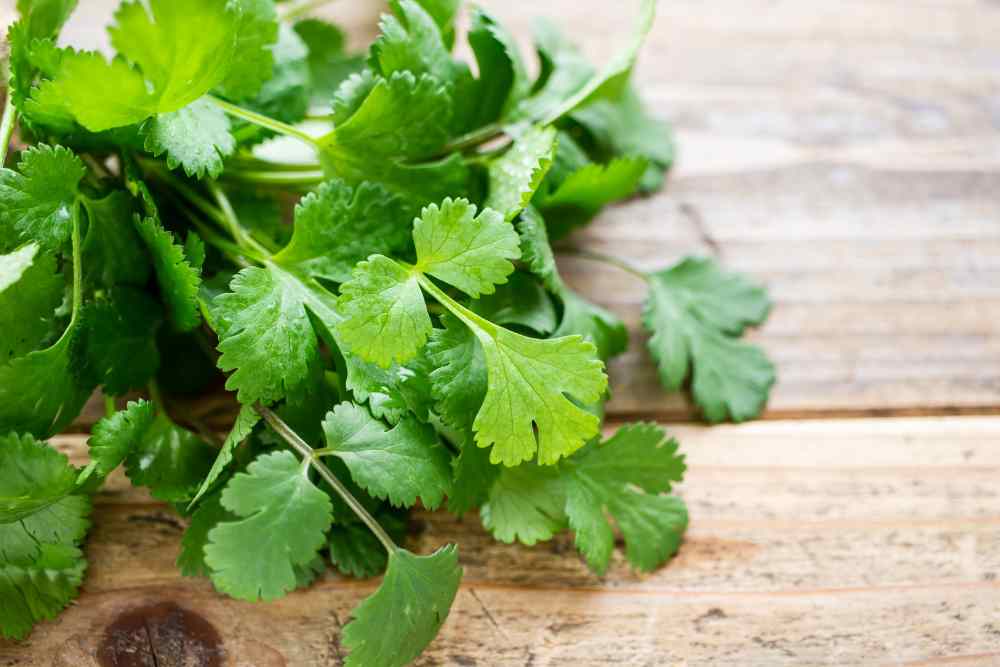
Coriander, also known as Chinese parsley, is a tender annual that is grown from seeds sown at regular intervals throughout the growing season.
Because the entire plant is edible, it is widely used in culinary dishes throughout Asia, including curries, Chinese, and Thai dishes. The seeds have a lemony flavor and can be ground down and used as a spice. The leaves, which are slightly bitterer, are frequently chopped and used as a garnish. Coriander is used in herbal remedies all over the world, in addition to its culinary uses.
- 29 Bucket Gardening Ideas for a Lush, Compact Garden - October 30, 2024
- 20+ Chic Boho Bedroom Ideas for a Cozy and Stylish Retreat - June 20, 2024
- 12+ Modern Boho Living Room Ideas to Create a Unique Oasis - June 10, 2024

